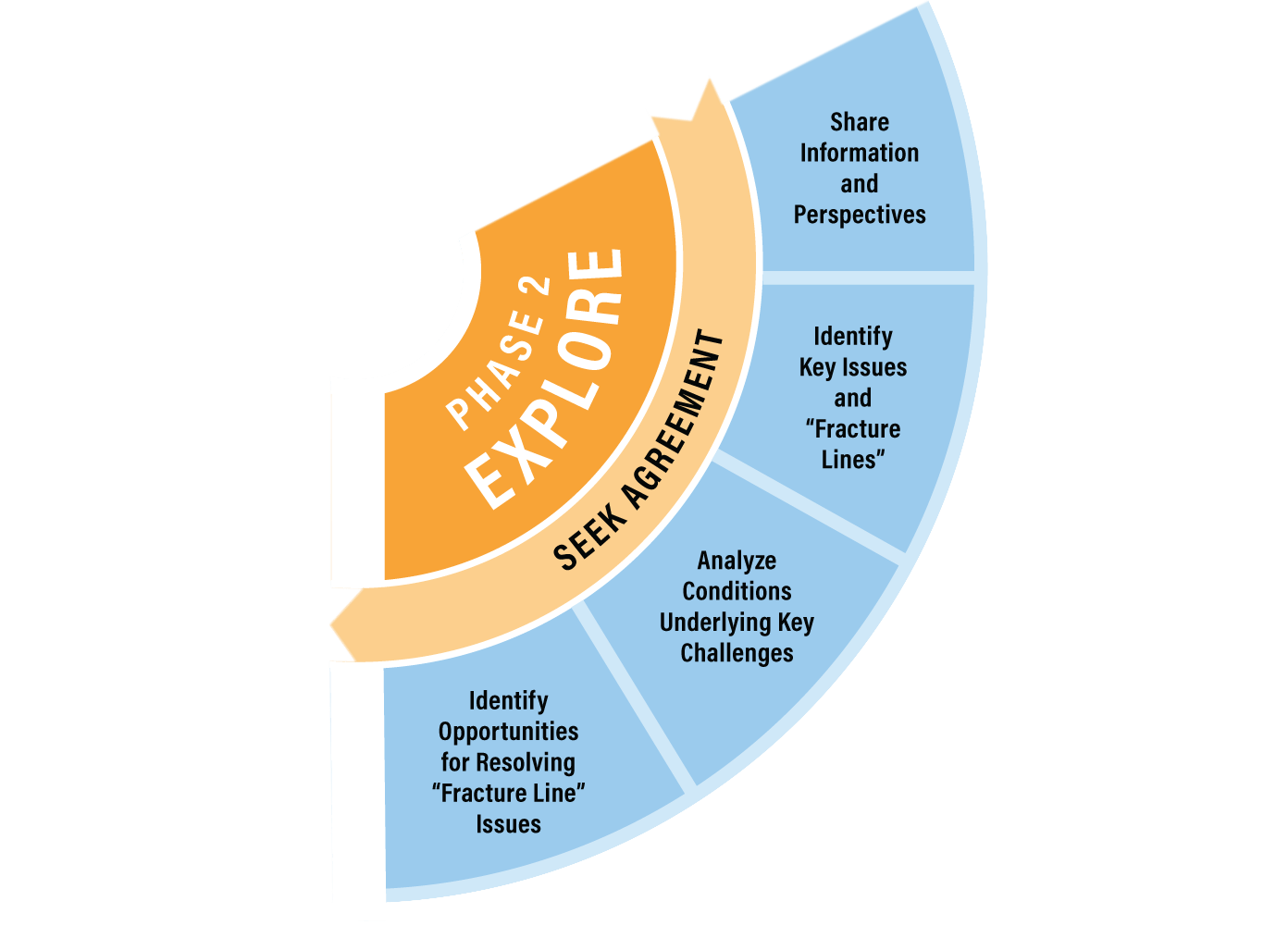Seek Agreement
Seek Agreement

Seek Agreement:
Phase One in TFD’s dialogue process generates collective commitment to the initiative, builds trust among leaders, and refines a collective understanding of the issue. The Advisory Group and Steering Committee follow-up on phase one by planning subsequent dialogues within the initiative. These dialogues entail Phase Two and are structured to seek agreement among participants through productive discussion and deliberation.
Share Information and Perspectives:
From this step, dialogue participants will acquire a common understanding of the different perspectives on the issue. This step often occurs before and at the beginning of a dialogue event An SC member, consultant, or other knowledgeable stakeholder drafts a Background Paper for a dialogue. This paper provides local context on the issues and shares information about the issue with participants. It is similar to a Scoping Paper, but it focuses on the local context of the global issue, to be explored during the dialogue. During dialogue, participants share their perspectives through field visits and presentations. Field visits give participants a view into each other’s experiences and encourage informal conversation. By exploring the tensions between their live experiences and worldviews, participants can have productive dialogue rather than simply advocating their own stance.
Identify Key Issues and “Fracture Lines”:
Once participants understand the local context, the next step is to identify local fracture lines and examine those identified from the Scoping Dialogue. This can be done through plenary discussions or breakout groups during dialogue.
Analyze Conditions Underlying Key Challenges:
Through the dialogue process, participants analyze the conditions that cause and underlie the issues. This analysis may be disaggregated by stakeholder group as various groups or sectors may hold different views of the underlying conditions. Any solutions must address the underlying causes of the fracture lines for those solutions to be sustainable and impactful.
Identity Opportunities for Resolving ‘Fracture Line” Issues:
Identifying opportunities for resolving the issues previously discussed is a major point of process for stakeholders engaged in dialogue. These opportunities can operate at a national or international level and may be implemented by any or all the stakeholders involved.
In TFD’s experience, this step requires strong facilitation as it can cast responsibility to individual organizations or actors. This step seeks agreement, not consensus. By the end of the step, the group should have produced a list of potential solutions.
See the TFD guide for further details on the Phase 2 of the TFD process
